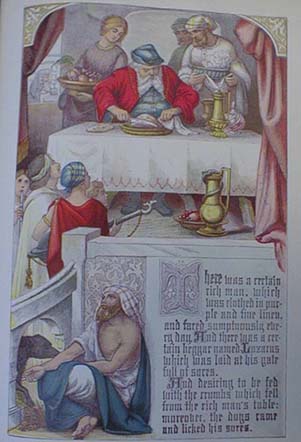

In the nineteenth century, Project scholar Colleen McDannell argues, the Bible became more than just holy scripture--Bibles became sacred objects in themselves. Given the most important place in the house and filled with family records and memories, the "family Bible" served as the spiritual center of the home. In a Protestantism that worshipped the Word made flesh and valued sermons over rituals, it is no surprise that Bibles would take on this iconic role. Publishers catered to this market by producing ever-larger Bibles, complete with explanatory articles, color illustrations, pages for recording births and deaths, and ornamental covers. The family Bible thus became a virtual altar of domestic piety, a place where the sacred life of the family and relations met the sacred life of the patriarchs, prophets, and apostles.
This 1892 edition includes the King James and Authorized Versions in parallel columns, as well as summaries of each book, "Bible Stories for the Young," and extensive illustrated articles on the zoology and botany of the Bible.
 The bible also includes richly colored, full-page prints, like this illustration of the
story of Lazarus and Dives. (Luke 16:19-31)
The bible also includes richly colored, full-page prints, like this illustration of the
story of Lazarus and Dives. (Luke 16:19-31)
The bible belongs to Richard Dietrich, Director of the Lay Institute of Faith and Life at Columbia Theological Seminary, who points out that it is a family Bible, but not from his family.
Return to the objects page
Return to the project home page